The Most Dangerous Mountain Trail in Mie: Isesanjo Ibutaji Temple
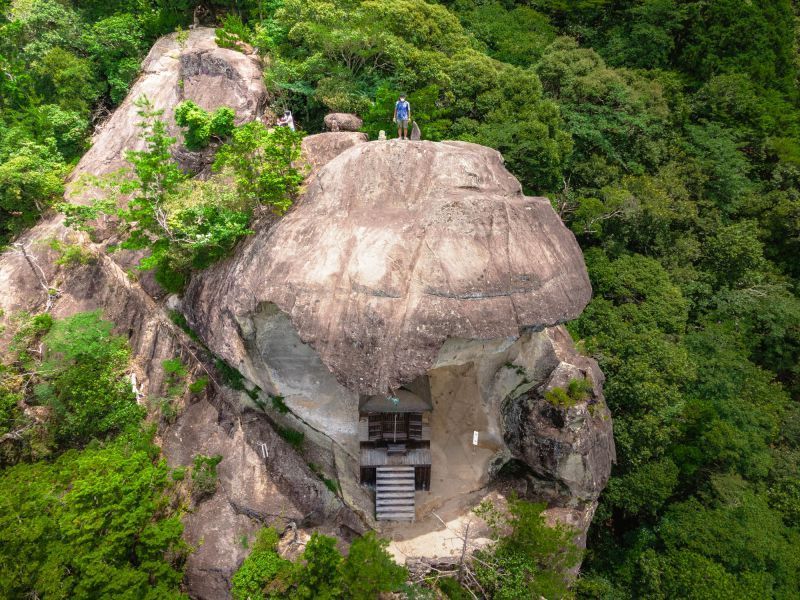
I’m surprised how few people know about this place.
Ever since my visit, I’ve mentioned this place to countless people in Mie and the Kansai region, and nobody has ever heard about the Isesanjo Ibutaji Temple.
Not a single person.
I’ve also been doing some online research and have yet to find a single blog post or image that accurately conveys a similar experience to what I had when climbing up to the sacred temple. This was one of the most memorable places during my trip to Mie and it truly feels like a hidden gem concealed away within the mountains of Matsusaka.
The Gomadaki Ceremony
The Isesanjo Ibutaji Temple performs the Gomadaki ceremony twice a year, in April and November.
During this event, dozens of monks from the temple climb up to this first shrine and perform the ceremony of opening/closing the temple doors to drive away evil spirits and to pray for one’s happiness, health, and safety.
The ceremony in April is to open the doors and the one in November is to close it. Since we visited during the summer, the Temple doors were open.
If there’s a best time to visit the Isesanjo Ibutaji Temple, it’s definitely during the Gomadaki ceremony!
During this event, dozens of monks from the temple climb up to this first shrine and perform the ceremony of opening/closing the temple doors to drive away evil spirits and to pray for one’s happiness, health, and safety.
The ceremony in April is to open the doors and the one in November is to close it. Since we visited during the summer, the Temple doors were open.
If there’s a best time to visit the Isesanjo Ibutaji Temple, it’s definitely during the Gomadaki ceremony!
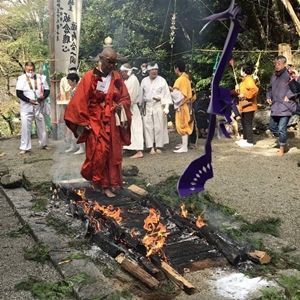
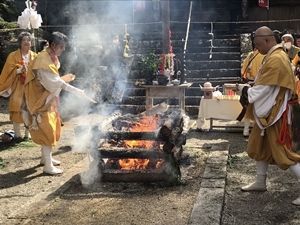
The Next Step
Now that we made it to the first temple, the next step is to climb the rock above it and there are 2 paths once again.
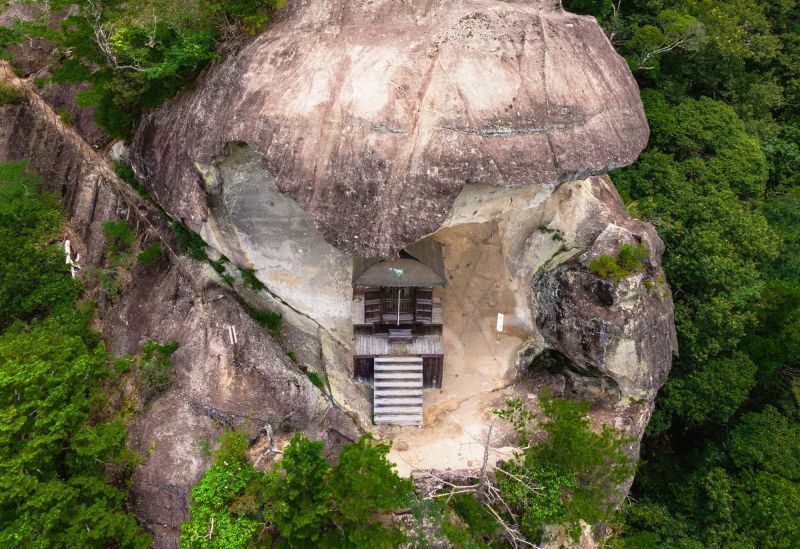
The safe route is to return back through the railed path and follow the path leading into the mountain.
The dangerous route is to climb from the inner part of the wall to the outer side, with your bare hands, then climb the outer wall up using chains. This path is arguably the most dangerous path in the entire trail since the rock is very high up in the mountains. If there were to be an accident on this route, there’s a very slim chance of surviving the drop.
And for that reason, the monk asked us not to take this route since it also rained earlier today (I also had the duty of making it out alive and writing this blog post).
We climbed up the safe route and it was definitely not as “safe” as I had expected. The pathway was quite narrow and we had to hold onto plants growing from the mountainside in order to stay balanced.
Nevertheless, we pushed through and made it to the top of the rock.
The dangerous route is to climb from the inner part of the wall to the outer side, with your bare hands, then climb the outer wall up using chains. This path is arguably the most dangerous path in the entire trail since the rock is very high up in the mountains. If there were to be an accident on this route, there’s a very slim chance of surviving the drop.
And for that reason, the monk asked us not to take this route since it also rained earlier today (I also had the duty of making it out alive and writing this blog post).
We climbed up the safe route and it was definitely not as “safe” as I had expected. The pathway was quite narrow and we had to hold onto plants growing from the mountainside in order to stay balanced.
Nevertheless, we pushed through and made it to the top of the rock.
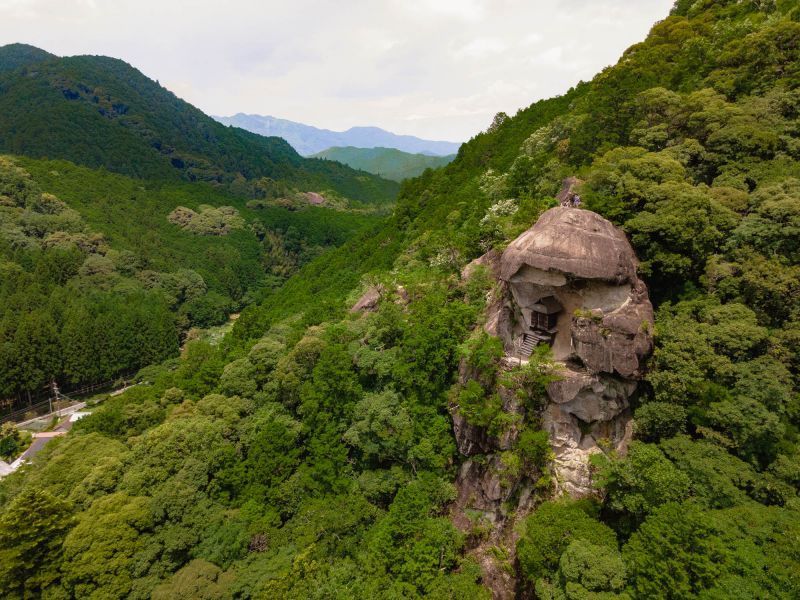
To get to here, it only takes about 30 minutes, but standing on top of that rock with a view that overlooks this entire part of the mountainside made it feel like we had accomplished a lot already.
I wanted to continue the hike and see the other 9 temple, but unfortunately our schedule only allowed us to come to this first point.
I guess it’ll have to wait until the next time!
I wanted to continue the hike and see the other 9 temple, but unfortunately our schedule only allowed us to come to this first point.
I guess it’ll have to wait until the next time!
Other things you can do at the Isesanjo Ibutaji Temple
Although the hiking trail is the main attraction, there are other activities you can enjoy at the Isesanjo Ibutaji Temple.
If you’re looking for some cultural experiences, the temple offers Ajikan meditation and sutra transcribing. If you’re escaping from the city and looking for a more natural experience, you can participate in harvesting tea leaves and making umeshu plum wine.
The temple also offers lodging and even a barbecue in the temple grounds!
Whether you want to challenge the most dangerous mountain trail in Mie or just looking for a nature getaway, the Isesanjo Ibutaji Temple is definitely a place that I highly recommend!
If you’re looking for some cultural experiences, the temple offers Ajikan meditation and sutra transcribing. If you’re escaping from the city and looking for a more natural experience, you can participate in harvesting tea leaves and making umeshu plum wine.
The temple also offers lodging and even a barbecue in the temple grounds!
Whether you want to challenge the most dangerous mountain trail in Mie or just looking for a nature getaway, the Isesanjo Ibutaji Temple is definitely a place that I highly recommend!
The Geographical Center Point of Mie: Ukisato
For lunch, we headed to a nearby area called Ukisato, which is supposedly located at the geographical center of Mie. Here, we visited a local mom and pop restaurant that serves some of the best udon I’ve ever had.

Unlike normal restaurants, there wasn’t a menu on the table and the only one in the restaurant was hanging on the wall, engraved in wood.
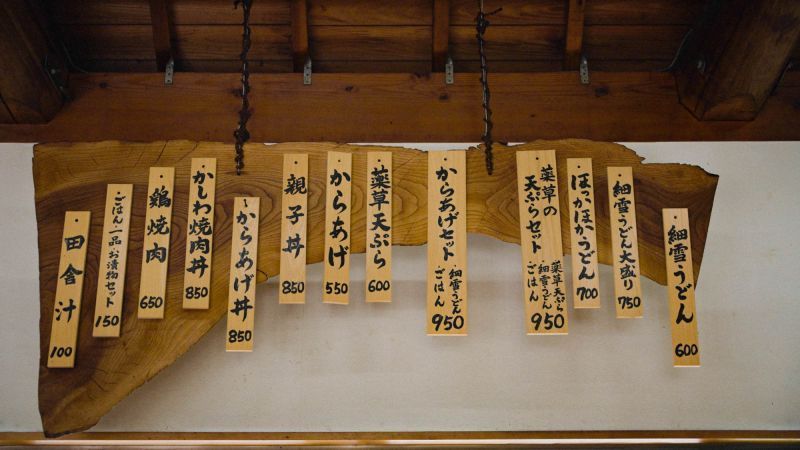
It doesn’t seem like there’s a lot of options at first, but I had a feeling each one was a solid choice. I decided to order the sansai(mountain vegetable) tempura set meal, and this is what I got.

With the sansai tempura set meal, I got the sansai tempura with an assortment of mountain vegetables, potato salad, pickled radish, rice, and green udon noodles.
The tempura came very gently battered, so you can taste the flavor of the vegetable inside. The potato salad was homemade and had more of a creamy texture than usual. Finally, the udon was the main feature of this meal.
The green color of the udon comes from being mixed with mugwort and it gives the noodles a distinct, refreshing taste to it.
To top it all off, the ingredients they use are all organic and locally grown so not only is it healthy, it also helps support the local farmers and community as well!
This meal was the perfect way to end our trip to the mountainside of Matsusaka.
The tempura came very gently battered, so you can taste the flavor of the vegetable inside. The potato salad was homemade and had more of a creamy texture than usual. Finally, the udon was the main feature of this meal.
The green color of the udon comes from being mixed with mugwort and it gives the noodles a distinct, refreshing taste to it.
To top it all off, the ingredients they use are all organic and locally grown so not only is it healthy, it also helps support the local farmers and community as well!
This meal was the perfect way to end our trip to the mountainside of Matsusaka.